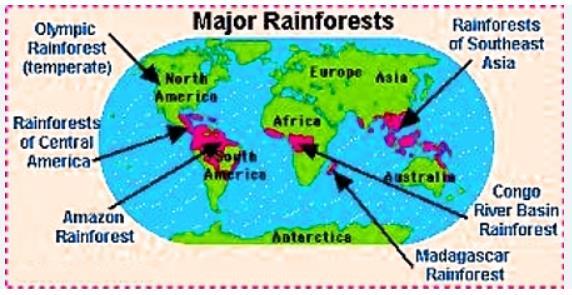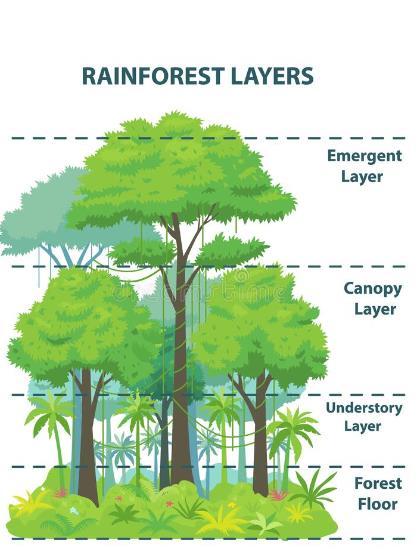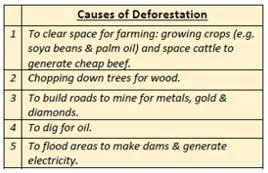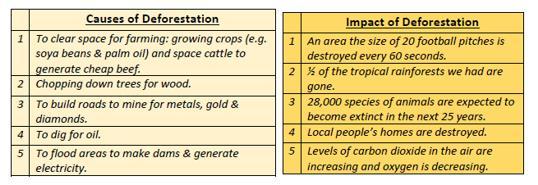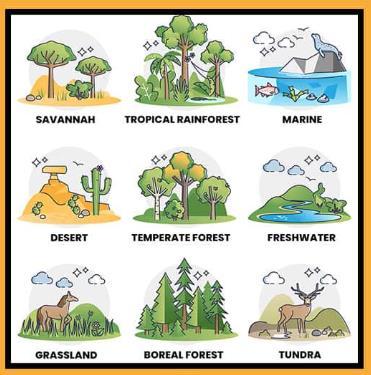Enquiry Questions
1. What are biomes?
2. What are rainforests and where might I find them?
3. What are tropical and temperate rainforests?
4. Why are rainforests made up of layers?
5. What might I find in a rainforest?
6. What is deforestation?
7. What is the impact of deforestation?
Why Should Rainforests Be Important to Us All?
Key Vocabulary
Buttress roots - Large, wide roots that support tall trees in shallow soil that lacks nutrients
The Layers of a Rainforest
Canopy - Tall trees that usually bear fruit all year with large leaves and thick branches that create a roof to the rainforest, preventing sunlight reaching the smaller plants
Climate - Temperature, wind, humidity, snow, and rain in a place over time
Deforestation - Widespread clearing of trees, often to make way for plantations and buildings
Emergent (layer) - Tall trees that stand out above the canopy. Only the strongest trees are emergent as they have competed for the sunlight
Fertile - The soil allows plants and crops can be grown
Forest floor - Almost no plants grow here because it is dark due to the taller trees blocking out the sun so organisms decay quickly
Humid - High levels of water vapour in the atmosphere
Organisms - A living thing, such as an animal or plant.
Plantation - A large area of land where crops are grown
Water falling from clouds (e.g. rainfall, snow, hail)
Mainly made out of bushes. It contains most of the chids because the orchids use water from the forest floor
The features of the surface of a piece of land (e.g. hilly, flat…)
A tangle of shrubs, young trees, saplings, palms and vines.
It is hot and damp here and the air is very still day temperature, precipitation and wind
The Congo Rainforest
Golden Threads
Tropical Rainforests Biomes
Location
Vegetation Belts
A vegetation belt is an area with distinct plant types, determined by climate, soil, drainage and elevation.
Climate
Change
Our World
Maps
Biomes are ecosystems that are grouped together according to similar climates



